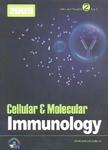The Qa-1 Dependent CD8^+ T Cell Mediated Regulatory Pathway
The Qa-1 Dependent CD8^+ T Cell Mediated Regulatory Pathway作者机构:Department of Medicine Division of Rheumatology College of Physicians & Surgeons Columbia University New York NY 10032 USA. HJ4@columbia.edu
出 版 物:《Cellular & Molecular Immunology》 (中国免疫学杂志(英文版))
年 卷 期:2005年第2卷第3期
页 面:161-167页
核心收录:
学科分类:1001[医学-基础医学(可授医学、理学学位)] 100102[医学-免疫学] 10[医学]
基 金:National Institute of Allergy and Infectious Diseases NIAID: R29AI039630 U19AI046132
主 题:T cell regulation CD8^+ T cell affinity/avidity Qa- 1 TCR
摘 要:The immune system has evolved a variety of regulatory mechanisms to ensure the peripheral self-tolerance as well as the optimal capacity to elicit effective anti-infection immunity. At present, there is no satisfactory conceptual framework to explain how the peripheral immunity is regulated at a biological system level, which enables the immune system to perform its essential functions to mount effective immunity to virtually any foreign antigens but avoid harmful immune responses to self. In this regard, during the past few years, an “affinity/avidity model of peripheral T cell regulation has been proposed and tested, which opens up a new paradigm to understand how the peripheral immunity, to both self and foreign antigens, is regulated. The paradigm is based on the discovery of a subset CD8^+ T cells with TCRs which specifically recognize a unique set of self-peptides presented by the MHC class Ib molecule Qa-I differentially expressed on T cells as a function of the affinity/avidity of T cell activation. These Qa-1 restricted CD8^+ T cells represent an example of how the immune system utilizes a unified mechanism to regulate adaptive immunity to both self and foreign antigens. Thus, by selectively down-regulating T cells of intermediate affinity/avidity, to any antigens, the immune system controls the adaptive immunity without the necessity to distinguish self from non-self in the periphery at the level of T cell regulation. Cellular & Molecular Immunology. 2005;2(3):161-167.



